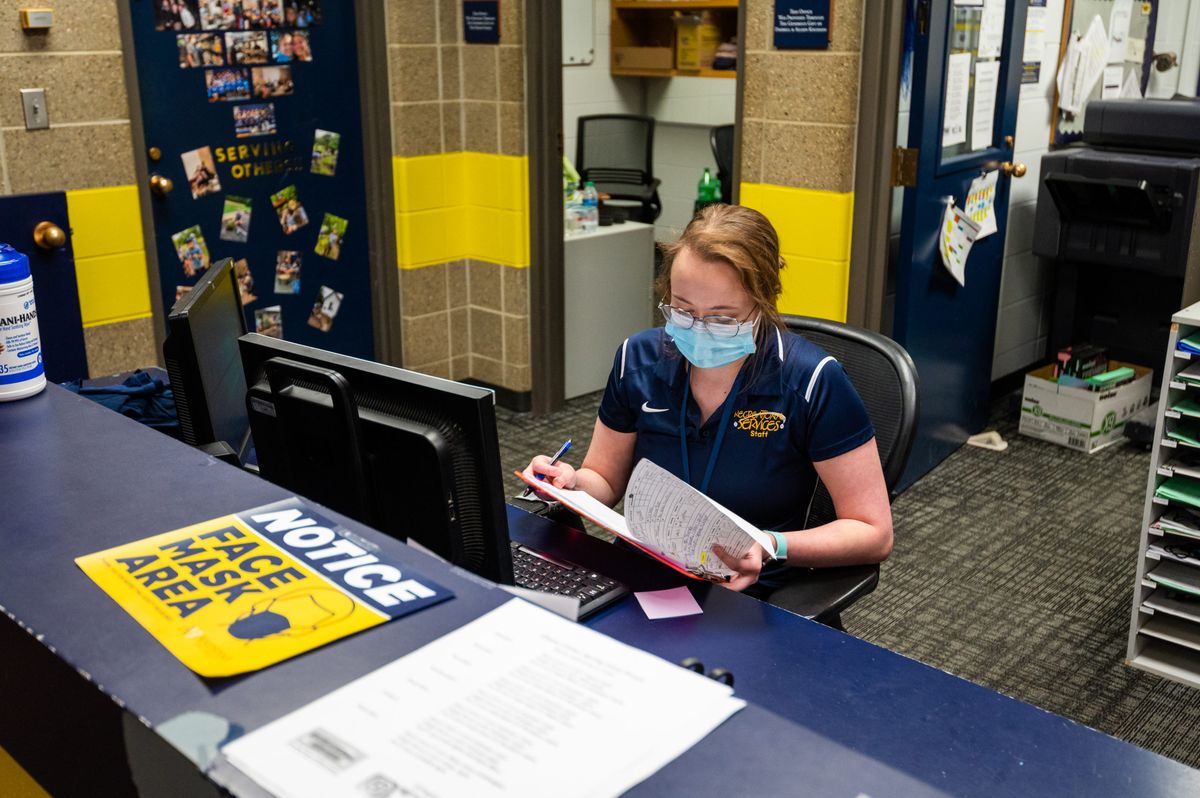Student employees receive $3 pay raise

Increase aims to solve student worker shortage
In an effort to better compensate students and promote on-campus employment, the financial aid office has increased the hourly wage for student employees to $12.50.
According to Tresse Evenson, director of financial aid, the unusually large increase from the previous rate of $9.45 seeks to address the decreased number of students who want to work on campus. As a result of the general worker shortage that Sioux Falls has faced over the past year, many businesses have increased their starting wage. Because of this, many students have started working off campus in pursuit of better pay.
“The shortage has prompted more businesses to increase their wage, which makes for a better opportunity for our students off campus,” Evenson said. “While there are other benefits to working on campus, we still needed to compete on the wage side.”
In the past, the pay rate for student employees has stayed nearly the same as South Dakota’s minimum wage. As a result, the increases tended to be small and incremental.
“We have typically increased wages in January to adopt the new state minimum wage each year, but we have never implemented this significant of an increase,” Evenson said.
Most of the money for the work study program comes from funding by the federal Department of Education. Evenson said Augustana will stay within its annual budget despite the pay raise.
A major reason for this increase is to solve the campus-wide student employee shortage that Augustana has faced over the past year, according to Evenson. This shortage has been hurting departments across campus that rely heavily on student employees.
One of the largest employers of students on campus is Recreational Services. According to Mark Hecht, the director of Rec Services, the department has been slightly understaffed since COVID-19, although it’s getting back to normal now.
The department started this school year with around 85 employees, which dropped as some workers quit over the course of the first semester. It was only around January when the department got to its current level of 95 staff members, which is close to pre-pandemic numbers. Additionally, Hecht said they’re looking to hire another 15 student employees before the end of the year.
While Rec Services has been able to continue operating as normal, with Hecht mentioning the only noticeable changes being decreased hours over January, some of the workers have been feeling the impact of having to work in an understaffed department.

According to Hecht, many student employees who quit over the course of last semester pointed to the difficulty of balancing their position at the Elmen with their school life as the main reason for leaving.
“I have nothing but great praise for [the staff],” Hecht said. “But was it easy? No, it wasn’t an easy semester.”
The Rec Services department has also recently lost two professional, non-student staff members: the outdoor program director and the Learn to Swim coordinator. As a result, student employees in leadership positions have had to take on some of those responsibilities.
Junior Grace Kelly, who works as an intramural supervisor and building supervisor said that, although students in higher positions have taken on new tasks, the overall workload for most employees hasn’t changed.
“Collectively as a group, we have picked up some of the slack,” Kelly said. “But it hasn’t impacted us too much.”
Another on-campus source of student employment that has dealt with this shortage is the Computer Help Desk. According to technology services coordinator Cheryl Swanson, who oversees the Help Desk and its employees, the group is running with an unusually small staff.
“Currently we have six employees,” Swanson said. “Historically we would have twice that many at this time of semester.”
While part of this number is due to the worker shortage in general, Swanson also said the changes to how students seek on-campus employment have also been a barrier. While students eligible for work study used to be assigned a job by the financial aid office based on their preferences, they now have to apply by themselves through the Augie Opportunities website.
This shortage has influenced the quality of services that the Help Desk provides. Swanson said more calls to the desk have gone to voicemail and students who come to the physical desk with problems have had to wait longer to get help.



